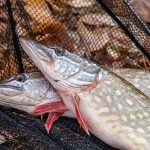1. Understanding Ice Fishing Sonar Technology
When it comes to winter fishing, especially ice fishing, using sonar can make a big difference in how successful your trip turns out. Whether youre a beginner or have been ice fishing for years, understanding the basics of sonar technology is key to locating fish under the ice effectively.
How Sonar Works for Ice Fishing
Sonar, short for Sound Navigation and Ranging, works by sending sound waves through the water. These waves bounce off objects like fish or the bottom of the lake and return to the transducer (the part of the sonar unit that sends and receives signals). The time it takes for the signal to return helps determine how far away an object is. In ice fishing, this allows anglers to “see” whats happening beneath their hole—whether its structure, depth changes, bait activity, or fish movement.
Types of Sonar Units Used in Ice Fishing
There are two main types of sonar units commonly used in ice fishing: flashers and LCD units. Both help you locate fish, but they display information differently and have their own pros and cons.
Comparison of Ice Fishing Sonar Types
| Type | Description | Pros | Cons |
|---|---|---|---|
| Flasher | Real-time circular display showing depth and movement using colored lights. | Instant feedback, great target separation, reliable in extreme cold. | Takes some time to learn how to read; limited historical data. |
| LCD Unit (Graph Sonar) | Displays underwater activity on a screen as scrolling graphs with detailed visuals. | Easier for beginners to read; shows history of movement; often includes GPS features. | Slight delay in real-time feedback; battery life may drop faster in cold weather. |
Which One Should You Choose?
If you prefer real-time action and fast response while jigging, a flasher might be your best bet. But if youre looking for more user-friendly visuals and features like mapping or waypoint marking, an LCD unit could suit you better. Many experienced anglers even bring both types on the ice to combine their strengths.
Key Features to Look For
- Depth Range: Make sure the unit can handle the depths you plan to fish.
- Target Separation: This determines how well the unit can show individual fish near each other.
- Cone Angle: A wider cone covers more area but offers less detail; narrow cones give more precision.
- Batteries: Cold temperatures drain batteries fast—look for long-lasting power options or bring extras.
Pro Tip:
If youre just starting out, try renting or borrowing different sonar models before buying your own. This gives you a chance to see what fits your fishing style without committing right away.
2. Choosing the Right Sonar for Ice Conditions
When it comes to ice fishing, having the right sonar unit can make all the difference between a slow day on the ice and a successful haul. The key is matching your sonar setup to the specific conditions you’ll be facing—like ice thickness, water depth, and the type of fish you’re targeting. Let’s break it down so you can choose the best sonar for your next winter trip.
Understanding Your Fishing Environment
Before choosing a sonar, think about where youll be fishing. Lakes across the U.S. vary widely in depth and species. Ice thickness also affects how well sonar signals travel, so its important to factor that in too.
Key Factors to Consider:
- Ice Thickness: Thicker ice can reduce signal clarity. You’ll need a sonar with strong transducer power to penetrate dense ice layers.
- Water Depth: Deeper lakes require sonars with greater range and sensitivity. Shallow lakes are more forgiving but still benefit from accurate sonar readings.
- Target Species: Panfish like crappie or bluegill behave differently than walleye or lake trout. Some species stay suspended, while others hug the bottom—your sonar should reflect those behaviors.
Types of Sonar Units
There are several types of sonar systems suited for ice fishing. Here’s a quick comparison:
| Sonar Type | Best For | Pros | Cons |
|---|---|---|---|
| Flasher Units | Panfish, shallow to medium-depth lakes | Real-time feedback, easy to read once learned | Takes time to understand color codes |
| LCD Graph Sonars | Larger species, deeper waters | Detailed visuals, history view available | Slight delay compared to flashers |
| Livescope/Forward-Facing Sonar | Trophy hunters targeting moving fish | Real-time video-like display, excellent range | Certain units are expensive and require more power |
Selecting Based on Your Target Fish
If youre chasing panfish like perch or bluegill in shallow Midwest lakes (like Lake Mille Lacs in Minnesota), a basic flasher will do just fine. But if youre after lake trout in deep waters such as Lake Superior or Lake Tahoe, opt for a high-powered LCD or even a live imaging system for precise tracking.
A Quick Match-Up Guide:
| Lakes & Regions (U.S.) | Icy Conditions | Recommended Sonar Type |
|---|---|---|
| Minnesota (e.g., Leech Lake) | Medium-thick ice, 10–30 ft depth | Flasher or LCD Graph |
| Michigans Upper Peninsula | Thick ice, 20–50 ft depth | LCD Graph with strong transducer wattage |
| Northern Rockies (Montana/Wyoming) | Diverse depths, mobile fish like trout | Livescope/Forward-Facing Sonar |
Your Power Source Matters Too
No matter which unit you choose, make sure your battery setup can support it for long days on the ice. Lithium batteries are lighter and last longer than traditional lead-acid ones—perfect for cold-weather use.
TIPS:
- If you’re new to sonar use, start with an affordable flasher model—it’s user-friendly and works well in most American lake settings.
- Add a soft pack or carrying case to protect your unit from snow and slush while drilling holes or moving spots.

3. Setting Up Your Ice Fishing Electronics
Getting your sonar dialed in correctly is key to finding fish fast and making the most out of your time on the ice. Here’s a step-by-step guide to help you set up and calibrate your sonar gear for optimal results during your winter fishing trip.
Step 1: Choose the Right Location
Before setting up your electronics, pick a spot where fish are likely to gather. Look for drop-offs, weed beds, or underwater structures using topographic maps or GPS mapping apps designed for ice anglers.
Step 2: Drill Your Hole
Drill a clean hole through the ice using an auger. Clear out all slush so your transducer has direct contact with the water. A clean hole ensures more accurate readings from your sonar unit.
Step 3: Position Your Transducer
Lower the transducer into the hole until it’s fully submerged just below the bottom of the ice. Make sure it’s hanging straight down and not tilted—it needs to be level for accurate readings.
Quick Tip:
A float or arm mount can help keep the transducer stable and properly positioned under the ice.
Step 4: Power On and Select Mode
Turn on your sonar unit and select the appropriate mode for ice fishing. Most units offer an “Ice Fishing” or “Flasher” mode specifically designed for vertical presentations used on the ice.
Step 5: Set Depth Range
If you know approximately how deep the water is, manually set your depth range to avoid unnecessary scanning. If unsure, use auto mode initially, then fine-tune once you get a reading.
Step 6: Adjust Sensitivity Settings
Sensitivity controls how much detail your sonar picks up. Too low and you might miss fish; too high and you’ll see too much clutter. Start at a mid-range setting and adjust based on what shows up on screen.
| Sensitivity Level | Description |
|---|---|
| Low (0-30%) | Might miss smaller fish or light activity |
| Medium (40-70%) | Balanced view; good starting point for most conditions |
| High (80-100%) | Picks up everything—useful in deep water but may show clutter |
Step 7: Adjust Interference Rejection
If youre fishing near others who are also using sonar, interference can be an issue. Use the “Interference Rejection” feature to filter out noise from nearby electronics.
Step 8: Fine-Tune Zoom and Gain
If youre targeting fish close to the bottom or suspended in a narrow band, use zoom features to focus on that specific area. Adjust gain to enhance weaker signals without overwhelming your screen with noise.
Troubleshooting Common Issues:
- No Signal? Check power connections and make sure the transducer is fully submerged and not tangled.
- Losing Bottom? Try increasing sensitivity or repositioning the transducer to ensure its level.
- Screens Full of Clutter? Lower sensitivity slightly or activate interference rejection if near other anglers.
A properly set-up sonar system gives you real-time feedback on fish activity, lure presentation, and depth changes—making every moment on the ice count. Spend a few minutes getting it right before dropping your line, and youll be ahead of the game all day long.
4. Reading Sonar to Locate Fish Under Ice
Using sonar during winter fishing can feel like having X-ray vision under the ice. The key is knowing how to read what your fish finder or flasher is showing you. When the water gets cold and fish become less active, understanding sonar readings helps you pinpoint where they’re hanging out, how they’re moving, and how bait reacts to them.
Understanding the Basics of Sonar Readings
Most ice anglers use flashers or digital sonar units. These devices send out sound waves and interpret the echoes that bounce back. Here’s a quick breakdown of what you typically see:
| Color/Signal | What It Means |
|---|---|
| Red or strong signal | Hard bottom or large object (like a fish close to the transducer) |
| Yellow/orange | Softer returns, possibly smaller fish or mid-sized structure |
| Green/light signal | Softer bottom, weed beds, or distant/small targets |
| A moving blip above bottom | A fish swimming through your sonar cone |
| A steady line near bottom | A stationary fish or school holding tight to structure |
Spotting Fish on Your Sonar
The most exciting part is when you spot a fish on your screen. Look for movement — a colored line that appears mid-column or near your jig. If it moves up toward your bait, that’s a fish showing interest. A good tactic is to gently jig your lure to imitate life and trigger a strike.
Bait Movement and Fish Reaction
Your bait will show up as a small line on the screen. As you lift or drop your rod, watch how the bait line moves and observe any nearby fish lines reacting. When a fish chases your bait upward, keep the motion smooth. Sudden stops can make cautious fish lose interest in cold water.
Identifying Bottom Structure and Hot Zones
The lakebed isn’t flat — identifying dips, humps, and drop-offs helps find fish hideouts. Use sonar to look for these variations:
- Drops: Sharp changes in depth often hold walleye and perch.
- Weed Beds: Show up as fuzzy areas above the bottom; great for panfish.
- Bait Clouds: Small clusters of flickering signals often indicate baitfish — where there’s bait, predators are usually close by.
Troubleshooting Tips for Clearer Readings
- Tune Gain/Sensitivity: Adjust sensitivity so you see both bait and fish clearly without too much clutter.
- Avoid Interference: Keep distance from other sonar users on the ice to reduce cross-talk between units.
- Lure Tracking Test: Drop your jig and see if it shows on screen — this confirms proper transducer positioning.
The more time you spend watching your sonar while fishing, the better youll get at interpreting its signals. With some practice, you’ll be able to recognize patterns and predict bites before they happen — giving you an edge every time you head out on hard water.
5. Advanced Tactics for Targeting Fish with Electronics
Once you’ve got the basics of sonar and ice fishing down, it’s time to level up your game with advanced tactics that help you stay on top of active fish throughout the day. Using your electronics smartly can make all the difference between a slow day and a full bucket. Let’s break down some key strategies.
Hole Hopping with Sonar
Hole hopping is one of the most effective ways to cover water and find fish fast during ice season. Instead of waiting at one spot, use your sonar to check multiple holes until you see signs of activity. Most modern flashers and LCD units give instant feedback, so if you don’t see marks within a minute or two, move on.
Tips for Effective Hole Hopping:
- Drill several holes in advance in a grid pattern
- Use sonar to scan each hole quickly
- Mark hot spots on your GPS or mobile app
Jigging Techniques to Trigger Bites
Once you’ve found fish, how you present your bait makes a big difference. Your sonar helps you see how fish react to different jigging motions, allowing you to adjust in real time.
| Jigging Technique | Description | When to Use |
|---|---|---|
| Pounding | Fast, aggressive jigging to get attention | When fish are scattered or inactive |
| Lift and Drop | Raise bait slowly and let it fall naturally | When fish are following but not biting |
| Deadstick | No movement at all, just hold bait steady | When fish are spooky or pressured |
Using GPS Integration for Fish Tracking
If your sonar unit has built-in GPS—or if you pair it with a smartphone app—you can mark productive holes and track your movements over the ice. This helps you return to hot spots later or create patterns based on depth and structure.
Benefits of GPS Integration:
- Easily revisit productive locations
- Create custom waypoints for structure or drop-offs
- Avoid drilling over unproductive areas twice
The combination of sonar, jigging finesse, and GPS mapping gives ice anglers a serious edge when chasing winter fish. With these tactics, you’ll be able to adapt throughout the day and maximize every hour on the ice.


